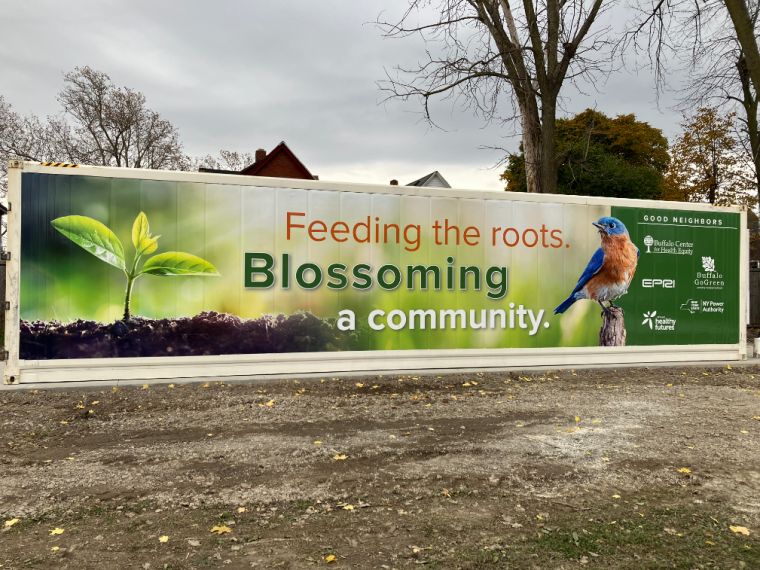
An indoor food production container to advance urban farming recently opened in Buffalo’s East Side. Located within a 40-foot shipping container installed at the Buffalo Go Green’s Zenner Street urban farm, the facility will grow vegetables and herbs year-round in an indoor environment without the use of soil. Community members, with oversight and direction from Buffalo Go Green, will produce and distribute the produce to those in need.
“We remain committed to addressing food insecurity in East Buffalo and ensuring that the community has access to affordable and healthy food options including fresh fruits and vegetables," Governor Hochul said. “Indoor food production facilities, like this one announced today, make it much easier to grow healthy food options, without soil, all year round, and right in neighborhoods that need increased access the most. I applaud the New York Power Authority, EPRI, Buffalo Go Green and our local partners for making this shipping container and farming programming available to our East Buffalo community to increase access to healthy foods.”
Buffalo Go Green provides services and training to help under-served populations in East Buffalo achieve nutritional success. The organization will oversee community training on the farm, teaching hydroponic gardening, sustainability and nutrition. The $300,000 investment is funded by the New York Power Authority and The Buffalo Center for Health Equity will own the container farm and offer agricultural community programs as well.
Buffalo’s East Side has seen several redevelopment projects in recent years. Most notable is the Northland Corridor – a $60 million project that includes the Northland Workforce Training Center (NWTC), which upskills community members for jobs in advanced manufacturing and clean energy. The NWTC produces $10.8M in annual economic impact and over 60 percent of its students are a minority.
Additionally, East Side Avenues program, a $65M investment, is strategically targeting four main avenues in Buffalo’s East Side to maximize economic impact for those working and living in the community. This includes leveraging Buffalo’s Broadway-Fillmore neighborhood’s dense stock of largely historic commercial buildings for new green space, retail-oriented streets, and improved bike and pedestrian connections.
Buffalo’s Central Terminal, a historic former railroad station, recently received $60M to restore its historic concourse and a $23.5M investment for the development of affordable homes on vacant city-owned lots on the East Side.
In terms of housing, this summer the region announced a $23.5M investment for the development of affordable homes on vacant city-owned lots on the East Side. This news came shortly after the completion of Mount Aaron Village, a $20.3 million project that included 59 new affordable apartments and 17 townhomes for 300 residents.
In addition to Buffalo Go Green, New York Power Authority and the Buffalo Center for Health Equity, participating partners of the new urban farm also include EPRI, NeuWater & Associates and Buffalo Center for Health Equity. EPRI is including the project in a nationwide research effort about the environmental impact of indoor farming.
